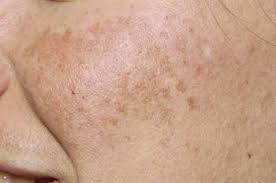
Diffuse Pigmentation
Diffuse Pigmentation is a condition where there is an overall darkening of the skin. This darkening can happen in any part of the body, but it is most commonly seen in areas that are exposed to the sun, such as the face, arms, and hands. The condition can be caused by a number of different factors, including sun exposure, hormonal changes, and certain medications
What Is Diffuse Pigmentation:
Diffuse Pigmentation One of the most common causes of diffuse pigmentation is sun exposure. When the skin is exposed to the sun, it produces more melanin, which is the pigment that gives color to the skin. This can lead to an overall darkening of the skin, as well as the development of age spots and freckles. People with darker skin tones are more prone to sun-induced pigmentation, as they have more melanin in their skin to begin with.
Hormonal changes can also lead to diffuse pigmentation. Melasma, also known as “the mask of pregnancy,” is a common condition that occurs in women during pregnancy. It is caused by an increase in hormones, such as estrogen and progesterone, which lead to the production of more melanin in the skin. Melasma can also occur in women who are taking birth control pills or hormone replacement therapy.
Certain medications can also cause diffuse pigmentation. Some antibiotics, such as tetracyclines, can lead to increased pigmentation in the skin. Other medications, such as antipsychotics and anti-seizure drugs, can also cause pigmentation. People who are taking these medications should be aware of the potential side effects and should talk to their doctor if they notice any changes in their skin.
What We Should Know About The Diffuse Pigmentation:
Treatment for diffuse pigmentation can vary depending on the underlying cause. In many cases, simple changes in lifestyle can help to reduce pigmentation. For example, wearing sunscreen and protective clothing when spending time in the sun can help to prevent sun-induced pigmentation. In some cases, topical creams and gels can be used to lighten the skin. These products can contain ingredients such as hydroquinone, kojic acid, or azelaic acid.
Laser therapy is another option that can be used to treat diffuse pigmentation. The laser light penetrates the skin and targets the melanin, breaking it down and reducing pigmentation. The procedure is usually done in a series of treatments, and the number of treatments required can vary depending on the severity of the pigmentation.
Chemical peels are a type of treatment that uses a chemical solution to remove the top layer of the skin. This can help to reduce pigmentation and improve the overall appearance of the skin. Chemical peels can be done in different strengths, depending on the person’s skin type and the severity of the pigmentation.
Diffuse Pigmentation How To Get It?
In cases where the pigmentation is caused by a medical condition or medication, treatment will focus on addressing the underlying cause. For example, if melasma is caused by hormonal changes, treatment may involve adjusting the person’s hormone levels. If pigmentation is caused by a medication, the person may need to switch to a different medication.
Diffuse pigmentation can be a frustrating condition to deal with, but there are many options available for treatment. By understanding the underlying causes of the condition, people can take steps to prevent it from happening in the first place, or to reduce it once it has developed. Whether it’s through lifestyle changes, topical treatments, or more aggressive therapies, there is a way to achieve a clearer and more even skin tone. It’s important to consult a Dermatologist if you are not sure about the cause of the pigmentation and get appropriate treatment.
Diffuse Pigmentation How To Treat Out This Problem?
Diffuse pigmentation, also known as melasma or “the mask of pregnancy,” is a common skin condition characterized by patchy, brown or gray discoloration on the face. It can be caused by hormonal changes, sun exposure, and certain medications.
Treatment options for diffuse pigmentation include:
- Topical creams and gels that contain hydroquinone, kojic acid, or azelaic acid, which can lighten dark spots.
- Chemical peels, which use an acid solution to remove the top layer of skin and improve discoloration.
- Microdermabrasion, which uses fine crystals to remove the top layer of skin and improve discoloration.
- Laser therapy, which uses light energy to destroy pigmented cells.
- Sun protection, including the use of sunscreen and avoiding prolonged sun exposure, is key in preventing the recurrence of melasma.
It’s important to note that melasma is a chronic condition that may require ongoing treatment. Consult a dermatologist for a proper diagnosis and treatment plan.

If you want to get amazing benefits by using this link
Conclusion:
In conclusion, diffuse pigmentation, also known as melasma, is a common skin condition characterized by patchy, brown or gray discoloration on the face. It can be caused by hormonal changes, sun exposure, and certain medications. Treatment options include topical creams and gels, chemical peels, microdermabrasion, laser therapy, and sun protection. It is important to consult a dermatologist for a proper diagnosis and treatment plan as melasma is a chronic condition that may require ongoing treatment.


